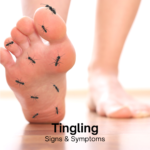Understanding Vaginal Dryness: Causes, Symptoms, and Treatments
Vaginal dryness is a common condition affecting women of all ages, though it is particularly prevalent during and after menopause. It can lead to discomfort, pain during intercourse, and other issues that impact the quality of life. This article delves into the causes, symptoms, and various treatment options available for vaginal dryness.
Causes of Vaginal Dryness
- Hormonal Changes:
- The primary cause of vaginal dryness is a decrease in estrogen levels. Estrogen helps maintain the natural lubrication and elasticity of the vaginal tissues. During menopause, estrogen levels drop significantly, leading to dryness.
- Other life stages and conditions, such as pregnancy, breastfeeding, and certain medical treatments like chemotherapy and radiation, can also cause hormonal fluctuations that lead to vaginal dryness.
- Medications:
- Certain medications, including antihistamines, decongestants, and antidepressants, can reduce the body’s natural moisture levels, contributing to vaginal dryness.
- Medical Conditions:
- Conditions such as Sjögren’s syndrome, an autoimmune disorder that affects moisture-producing glands, can cause vaginal dryness. Diabetes and other systemic diseases can also be contributing factors.
- Lifestyle Factors:
- Smoking can decrease blood circulation, impacting the health of vaginal tissues. Excessive alcohol consumption and high levels of stress can also affect hormonal balance and contribute to dryness.
- Poor diet and inadequate hydration may exacerbate the condition.
- Douching and Harsh Soaps:
- Using douches, scented tampons, and harsh soaps can disrupt the natural balance of bacteria and pH in the vagina, leading to dryness and irritation.
Symptoms of Vaginal Dryness
- Discomfort and Irritation:
- Women with vaginal dryness may experience persistent discomfort, itching, or burning in the vaginal area. This can be particularly noticeable during physical activity or while wearing tight clothing.
- Painful Intercourse:
- One of the most common symptoms is dyspareunia, or pain during intercourse. The lack of lubrication can make sexual activity uncomfortable and even painful, leading to a decrease in sexual desire and intimacy.
- Urinary Symptoms:
- Vaginal dryness can be associated with urinary symptoms such as frequent urination, urgency, and a burning sensation during urination. This is because the tissues of the urinary tract can also be affected by decreased estrogen levels.
- Vaginal Discharge:
- Some women may notice a change in vaginal discharge. It may become thin and watery or, in some cases, there may be a noticeable decrease in discharge.
Diagnosis and Evaluation
Diagnosing vaginal dryness typically involves a thorough medical history and physical examination. A healthcare provider may ask about symptoms, medical history, and any medications being taken. A pelvic exam can help assess the health of vaginal tissues and identify any underlying conditions contributing to the dryness.
Treatment Options
- Hormone Replacement Therapy (HRT):
- HRT is often prescribed to alleviate the symptoms of menopause, including vaginal dryness. Estrogen can be administered orally, transdermally (through the skin), or vaginally. Vaginal estrogen creams, tablets, and rings are effective in delivering estrogen directly to the affected area.
- Non-Hormonal Moisturizers and Lubricants:
- Over-the-counter vaginal moisturizers can help maintain the natural moisture balance of the vagina. These are applied regularly and can provide long-term relief.
- Water-based or silicone-based lubricants can be used during sexual activity to reduce friction and discomfort. It is important to avoid products with glycerin or parabens, as they can cause irritation for some women.
- Lifestyle Modifications:
- Staying hydrated and maintaining a healthy diet rich in omega-3 fatty acids can support overall vaginal health. Foods like flaxseeds, walnuts, and fish are good sources of omega-3s.
- Quitting smoking and reducing alcohol intake can improve blood circulation and hormone balance.
- Managing stress through techniques such as yoga, meditation, or counseling can help regulate hormonal fluctuations.
- Alternative Therapies:
- Some women find relief through alternative therapies such as acupuncture, herbal supplements, and phytoestrogens (plant-based estrogens found in soy products). However, it is important to consult with a healthcare provider before starting any alternative treatments.
- Regular Sexual Activity:
- Regular sexual activity, including masturbation, can increase blood flow to the vaginal tissues and help maintain elasticity and lubrication. Using a vibrator can also stimulate blood flow and improve vaginal health.
- Pelvic Floor Exercises:
- Pelvic floor exercises, also known as Kegel exercises, can strengthen the pelvic muscles and improve blood circulation to the vaginal area, potentially reducing dryness and improving overall sexual health.
When to See a Doctor
If vaginal dryness is causing significant discomfort or impacting quality of life, it is important to seek medical advice. Persistent symptoms, especially when accompanied by abnormal bleeding, unusual discharge, or severe pain, should be evaluated by a healthcare professional.
Conclusion
Vaginal dryness is a common but manageable condition. Understanding the causes and symptoms can help women seek appropriate treatment and improve their quality of life. With various treatment options available, from hormone replacement therapy to lifestyle changes and over-the-counter products, relief is within reach. It is important for women to communicate openly with their healthcare providers to find the best solution tailored to their individual needs.





